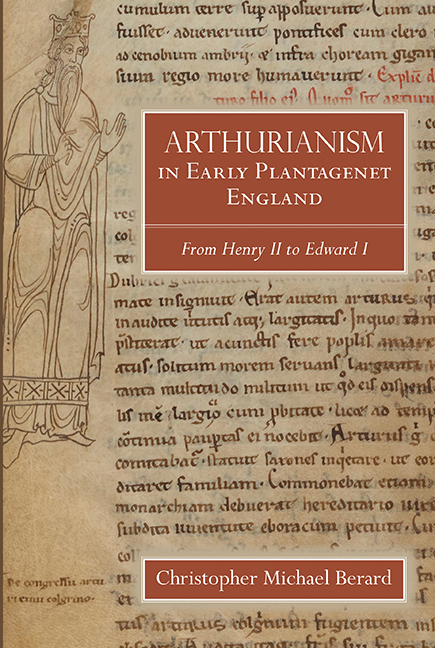Book contents
- Frontmatter
- Contents
- List of abbreviations
- Genealogical Table of the Sovereigns of England from William I to Edward II
- Introduction
- 1 Arthurianism during the reign of Henry II, 1154–1189
- 2 Arthurianism during the reign of Richard I, 1189–1199
- 3 Arthurianism during the reign of King John, 1199–1216
- 4 Arthurianism during the reign of Henry III, 1216–1272
- 5 Arthurianism during the reign of Edward I, 1272–1307
- Conclusion
- Bibliography
- Acknowledgments
- Index
- Miscellaneous Frontmatter
3 - Arthurianism during the reign of King John, 1199–1216
Published online by Cambridge University Press: 25 March 2020
- Frontmatter
- Contents
- List of abbreviations
- Genealogical Table of the Sovereigns of England from William I to Edward II
- Introduction
- 1 Arthurianism during the reign of Henry II, 1154–1189
- 2 Arthurianism during the reign of Richard I, 1189–1199
- 3 Arthurianism during the reign of King John, 1199–1216
- 4 Arthurianism during the reign of Henry III, 1216–1272
- 5 Arthurianism during the reign of Edward I, 1272–1307
- Conclusion
- Bibliography
- Acknowledgments
- Index
- Miscellaneous Frontmatter
Summary
King John: the anti-Arthur
John Lackland is not known to have emulated King Arthur. The only exception – if it should be regarded as such – is an entry for December 1207 in the Rolls of Letters Patent preserved in the Tower of London, which states that King John received into his possession at Clarendon a ‘magnam coronam que venit de Alemannia’ (great sword that came from Germany), precious clothes and jewelry, and ‘duos enses, scilicet ensem Tristami et alium ensem de eodem regali’ (two swords, namely the sword of Tristam and another sword of the same royal). When and whence Tristam's sword entered the royal treasury is unknown, but the aforesaid entry allows for the possibility that all the items named in it, including Tristam's sword, came from Germany. The dean of Westminster, Arthur Penrhyn Stanley, believes that Emperor Otto IV (r.1209–15) gave Tristam's sword to his uncle, King John, in 1207. E. M. R. Ditmas theorizes that the sword arrived in England in 1125 as part of the regalia that Matilda brought to England after the death of her husband Heinrich V.
Aurell has suggested that King Henry II bestowed the sword on John when knighting him on Laetare Sunday (31 March) 1185 as a symbolic accompaniment to the appanage of Ireland and Cornwall – two lands where much of the Tristan narrative takes place. Technically, Henry had already named John ‘Lord of Ireland’ at the Council of Oxford in May 1177. But it was in 1185 that Henry sent his newly knighted son off on his first military campaign, the objective of which was to expand the Plantagenet foothold in Ireland. Tristan's first knightly adventure, according to tradition, had also been in Ireland: Tristan defeated the Irish giant Moholt, brother of the queen of Ireland, in single combat and freed Cornwall from a demand of tribute. A notch of Tristan's sword remained lodged in the dead giant's skull – a perpetual reminder of the knight's great victory. If he bestowed the sword on John in 1185, Henry's intention might have been to suggest that the prince would achieve similar success in Ireland.
- Type
- Chapter
- Information
- Arthurianism in Early Plantagenet EnglandFrom Henry II to Edward I, pp. 141 - 174Publisher: Boydell & BrewerPrint publication year: 2019

